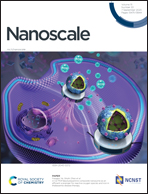Metal–organic framework derived inverse opal type 3D graphitic carbon for highly stable lithium-ion batteries†
Abstract
Graphitic carbon-based anodes for lithium-ion batteries have seen remarkable development and commercial acceptance during the past three decades. Still, the performance of these materials is limited due to the low surface area, stacking of layers, poor porosity, and meager conductivity. To overcome these limitations, we propose using polystyrene as a core and small-sized zeolitic imidazolate framework-67 (ZIF-67) particles as decorators to develop a highly porous three-dimensional graphitic carbon material. The developed material is optimized with the carbonization temperature for the best anodic performance of LIBs. The pyridinic nitrogen content in the material carbonized at 700 °C makes it high performing and more stable than the samples treated at 600, 800, and 900 °C. The packed coin cell exhibited an initial discharge capacity of 775 mA h g−1 at a current density of 50 mA g−1, which increases to 806 mA h g−1 after testing the material at different current densities for 55 cycles. The packed half-cell exhibited a highly stable performance of about 96% even after testing for 2000 cycles at 1 A g−1.



 Please wait while we load your content...
Please wait while we load your content...